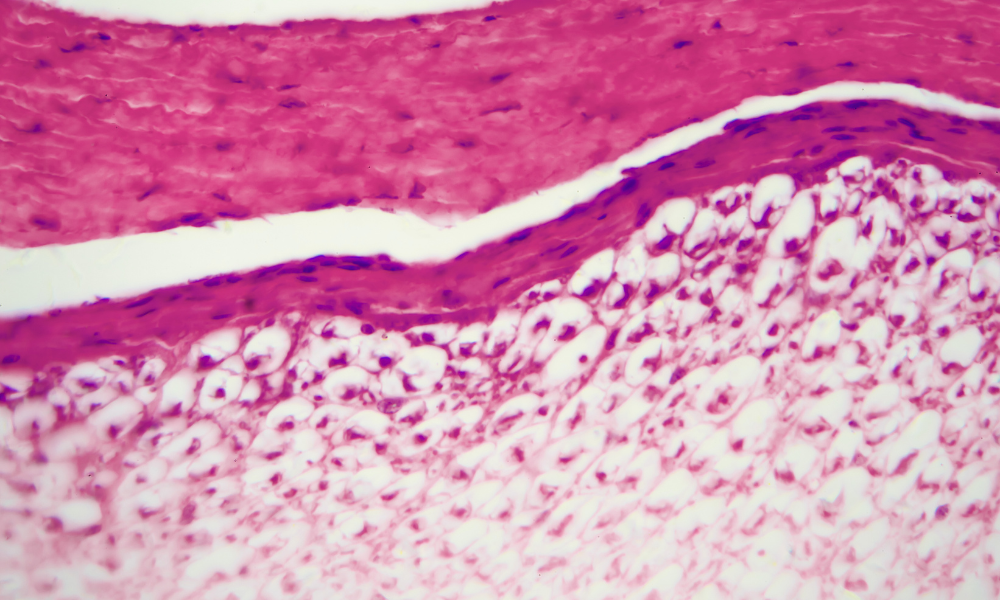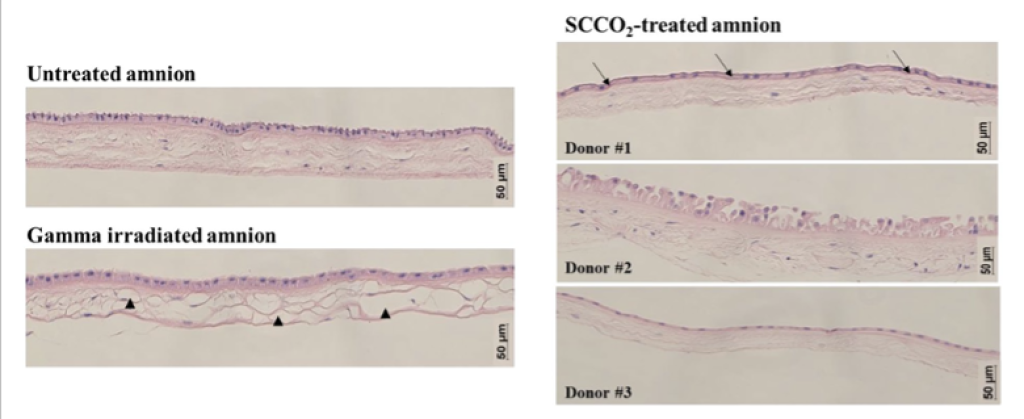
Clinicians and medical device companies have long recognized the complexities associated with biomaterials and implantable medical devices. Recently, allograft tissue has seen greater interest from surgeons looking to achieve improved patient outcomes. However, preserving the functional properties of allograft tissues while ensuring sterility has long posed a challenge. Improvements to allograft processing are allowing for comparable outcomes relative to autograft solutions. A growing body of research has demonstrated that supercritical carbon dioxide (scCO2) sterilization offers an effective, gentler method for preserving the biomechanical properties and regenerative growth factors in allografts.
Allograft Tendons in ACL Reconstruction
Surgeons have historically been cautious about using allograft tendons for anterior cruciate ligament reconstruction (ACLR) due to concerns of high graft failure rates. This perception largely stemmed from the degradation of biomechanical properties due to graft processing methods that utilized traditional sterilization methods (such as irradiation). These methods, while effective at eliminating pathogens, also damage collagen structures and reduce the mechanical strength of the tissue.
Supercritical carbon dioxide is a validated method of terminally sterilizing biomaterials at physiological temperatures without irradiation. Supercritical CO2 has been shown to preserve the biomechanical properties and microarchitecture of collagen-based materials.
Clinical research led by Dr. Pinczewski of North Sydney Orthopedic and Sports Medicine Center demonstrated and concluded that “scCO2 processing of allograft tendons demonstrated satisfactory clinical and patient-reported outcomes at 24 months postoperatively in a consecutive series of patients with primary ACLR, with similar ACL graft failure rates and subjective knee scores compared with those reported in published series of hamstring tendon autograft and fresh frozen nonirradiated allograft.” 1
These findings highlight scCO2 sterilization as a superior alternative to traditional sterilization methods for allograft tendons, making them a more viable option for tissues used in ACLR procedures.
Amnion Allografts in Regenerative Medicine
Amnion allograft tissue sterilized using scCO2 is similarly being recognized for its unique properties that enable its broader use in wound care and regenerative medicine applications. The amniotic membrane is primarily composed of collagen that incorporates numerous cytokines and growth factors. These proteins have been indicated to promote re-epithelialization and neovascularization. Historically, the expectation of the allograft being sterilized has come at the expense of reduced natural beneficial properties of collagen-rich in cytokines and growth factors, limiting the clinical efficacy of amnion allografts.
A recent study conducted by Jennifer O’Connell, Anand Srinivasan, and their colleagues at BioBridge Global provides a side-by-side comparison of growth factor retention based on sterilization methods (scCO2, gamma irradiation, and e-beam). The study found that amnion tissue sterilized with scCO2 showed retention of growth factors 100 times higher than what has been observed with commercially available amniotic membrane sterilized by irradiation. Moreover, the scCO2 sterilized amnion maintained the architecture of its collagen stroma whereas the gamma irradiated amnion exhibited dramatic damages to the collagen stroma.2

The increased preservation of growth factors and structure of collagen stroma leads researchers to believe that scCO2 sterilized amnion will improve patient outcomes in the clinical setting. These findings emphasize the advantages of scCO2 sterilization in maintaining the biological activity of amnion tissue, making it a more effective option for regenerative medicine applications.
The Future of Biomaterial Sterilization
These findings underscore the importance of preserving the natural integrity of biomaterials, as well as an alternative way forward. Supercritical CO2 sterilization is proving to be a groundbreaking advancement in tissue processing for medical implants and regenerative therapies.
scCO2 sterilization is expanding acceptance across regenerative medicine applications based on its ability to eliminate contaminants without damaging tissue structure. The benefits of scCO2 in tissue processing include:
- Preservation of collagen integrity, essential for mechanical performance
- Higher retention of growth factors, leading to better patient outcomes
- Elimination of pathogens without the drawbacks of irradiation-based sterilization
For medical professionals and device manufacturers, adopting scCO2 sterilization could mean better patient outcomes, improved graft longevity, and enhanced wound healing capabilities.
Conclusion
In summary, both of these studies demonstrate that scCO2 sterilization is better suited to maintaining the beneficial properties inherent in allograft tissue, making scCO2 sterilization an improved alternative to gamma and e-beam sterilization modalities.
As researchers continue to explore alternative sterilization modalities, scCO2 sterilization is poised to offer an effective, low-impact approach to allograft processing, providing both clinicians and patients with safer, more effective treatment options.If you’re interested in learning more about the role of supercritical CO2 in these findings or how you can leverage scCO2 for your application, contact NovaSterilis to schedule a call.

